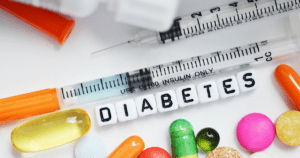World Diabetes Day: All you need to know about diabetes; and what to do
November 14, 2021

As the international community celebrates World Diabetes Day (WDD) today, it is important to know what the ailment is all about and take necessary precautions.
The UN has designated Nov. 14 of every year as WDD to raise awareness about diabetes as a global public health issue and what needs to be done collectively and individually for better prevention, diagnosis and management of the condition.
The 2021 celebration has “Access to Diabetes Care” as its theme.
The day is also to celebrate the birthday of Sir Frederick Banting, who discovered the Insulin hormone, along with Charles Herbert Best in 1922.
Insulin is a hormone that allows glucose in the blood to enter cells, providing them with the energy to function.
But, what is diabetes?. Diabetes occurs when blood glucose, also called blood sugar, is too high in the body.
Blood glucose is the main source of energy and comes from the food you eat, while Insulin, a hormone made by the pancreas, helps glucose from food to get into cells to be used for energy.
However, sometimes the body doesn’t make enough—or any—insulin or doesn’t use insulin well. The glucose will then stay in the blood and doesn’t reach the cells and over time, having too much glucose in the blood can cause health problems.
Although diabetes has no cure, steps can be taken to manage the condition and stay healthy. Sometimes referred to as “a touch of sugar” or “borderline diabetes”, these terms suggest that someone doesn’t really have diabetes or has a less serious case, but every case of diabetes is serious.
The World Health Organisation (WHO) says this year’s World Diabetes Day is taking place at the end of a year which has been intensive in terms of global advocacy for the disease.
The world body and partners used the opportunity of the 100th anniversary of the discovery of insulin to highlight the huge gap between the people who need it to control their diabetes, as well as essential technologies such as blood glucose meters and test strips, and those who actually have access.
The day also comes at a time when the world continues to live through the COVID-19 pandemic, which has not only resulted in high proportion of people with diabetes among hospitalised patients with severe manifestations of COVID-19 and among those who have succumbed to the virus, but has also led to severe disruption of diabetes services.
Meanwhile, there are different types of diabetes and the most common types are Type 1, Type 2, and gestational diabetes.
Type 1 diabetes occurs when the body does not make insulin and body immune system attacks and destroys the cells in the pancreas that make insulin, usually diagnosed in children and young adults, although it can appear at any age. People with Type 1 diabetes, therefore, need to take insulin every day to stay alive.
Type 2 diabetes, which is the most common type of diabetes, occurs when the body does not make or use insulin well and one can develop Type 2 diabetes at any age, even during childhood. However, this type of diabetes occurs most often in middle-aged and older people.
Gestational diabetes develops in some women when they become pregnant. Most of the time, this type of diabetes goes away after the baby is born. However, if a woman has had gestational diabetes, there is a greater chance of developing Type 2 diabetes later in life and sometimes, diabetes diagnosed during pregnancy is actually Type 2 diabetes.
Other types of diabetes are those that are less common, which include monogenic diabetes which is an inherited form of diabetes, and cystic fibrosis-related diabetes.
Consequently, it is very important to take precautions to avoid the disease, as some people are more likely to develop Type 2 diabetes simply because they are 45 years or older or they have a family history of diabetes or are overweight.
Physical inactivity, race and health challenges such as high blood pressure are other risk factors of developing Type 2 diabetes too.
Therefore, it is very important to modify lifestyle as people age, as people with diabetes can develop heart disease, stroke, kidney disease, eye problems, dental disease, nerve damage, and foot problems.
You can take steps to lower your chances of developing the disease by achieving a healthy weight, eating a balanced carbohydrate-controlled diet, and getting regular exercise to improve blood glucose control.
Sugary beverages are, therefore, the worst drink choice for someone with diabetes, artificial trans fats are extremely unhealthy, while bread, pasta and other refined-flour foods have been shown to significantly increase blood sugar levels in people with Type 1 and Type 2 diabetes.
Other foods to avoid are packaged snacks that are typically made with refined flour and provide few nutrients.
Vegetables and fruits can be great food options, eaten with caution and in moderation to keep fit and healthy and to manage the condition.
By Hadiza Mohammed-Aliyu , NAN Features







